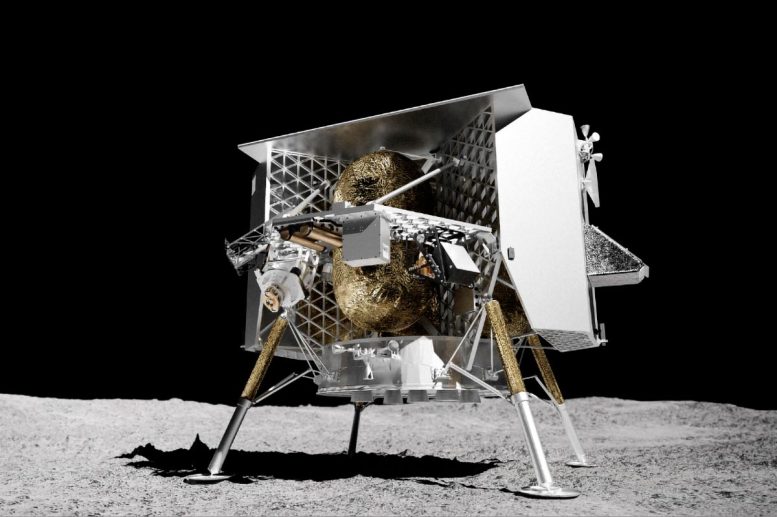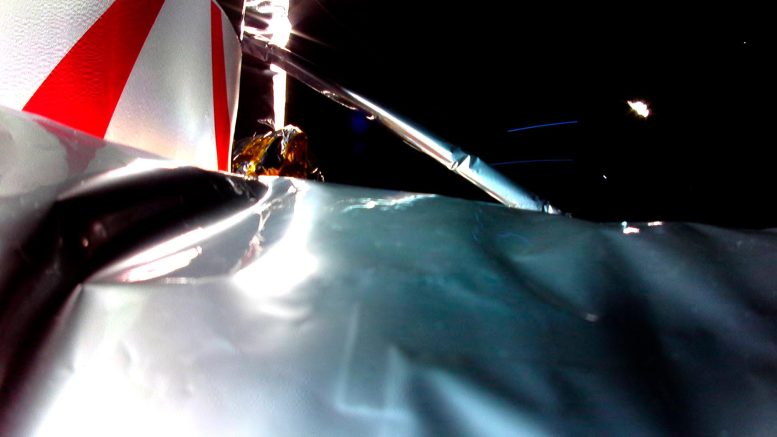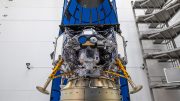
According to Astrobotic, the Peregrine is projected to make its re-entry into Earth’s atmosphere and potentially burn up on Thursday, January 18. (Artist’s concept.) Credit: SciTechDaily.com
Astrobotic Predicts Peregrine’s Fiery Earth Re-Entry on January 18
Despite a successful launch, Peregrine faced a propulsion issue, preventing a Moon landing. It is set to re-enter Earth’s atmosphere and burn up. NASA continues to support Astrobotic in analyzing the issue and planning future missions, emphasizing the lessons learned from this experience.
The following NASA statement is attributed to Dr. Nicola Fox, associate administrator, Science Mission Directorate at NASA Headquarters in Washington:
As part of NASA’s CLPS (Commercial Lunar Payload Services) initiative, Astrobotic’s Peregrine became the first American commercial lunar lander to launch on a mission to the Moon. Under the Artemis campaign, NASA is supporting exploration through the development of a lunar economy fostering a new commercial robotic delivery service carrying NASA science and technology instruments to the Moon in advance of future missions with crew.
The privately designed and developed Peregrine robotic spacecraft uses novel, industry-developed technology, some of which has never flown in space. Shortly after a successful launch and separation from the rocket on January 8, the spacecraft experienced a propulsion issue that would ultimately prevent it from softly landing on the Moon.
Astrobotic said on its current trajectory, Peregrine will re-enter the Earth’s atmosphere on Thursday, January 18, and is likely to burn up. Astrobotic worked with NASA’s assistance to assess the most appropriate action, and this is the best approach to safely and responsibly conclude Peregrine Mission One.

Peregrine is Astrobotic’s small-class lunar lander. Here is an illustration of what it would have looked like, had it managed to land on the Moon. Credit: Astrobotic Technology
While it’s too soon to understand the root cause of the propulsion incident, NASA continues to support Astrobotic, and will assist in reviewing flight data, identifying the cause, and developing a plan forward for the company’s future CLPS and commercial flights.
Spaceflight is an unforgiving environment, and we commend Astrobotic for its perseverance and making every viable effort to collect data and show its capabilities of Peregrine while in flight. Together, we will use the lessons learned to advance CLPS.










I see the brow-beating about “irresponsible” re-entry that has dogged similar scenarios by China is decidedly absent in the reporting now that it’s NASA and “Team Good Guys”
I think the issue with China was that it was the second stage of large booster weighing many tons which included turbopumps that won’t disintegrate during re-entry VS this rather small, 1 ton box which very likely will vapourize before reaching the earth. So not really a “similar scenario.”
“novel, industry-developed technology, some of which has never flown in space” Why am I not surprised at the result? Too much positive spin on a total failure.